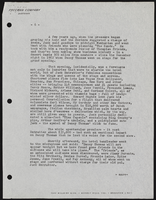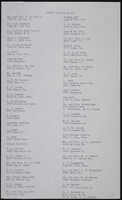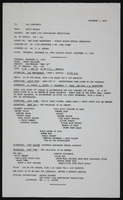Search the Special Collections and Archives Portal
Search Results

Transcript of interview with Jim Marsh by Claytee D. White, June 5, 2012
Date
Archival Collection
Description
Jim Marsh in Denver, Colorado. Father was the chief for the Colorado Patrol. Mother lived in Nebraska. Jim split time in both places while growing up. He was a service member of the Army and once getting out of the service he started his work with his father at a Ford dealership. Jim went on to work and own dealership in several different areas, Colorado, California, New Mexico, and Washington states before arriving in Las Vegas, NV in 1971. Once arriving in Las Vegas Marsh purchased a dealership called American Auto Mart. Around 1976 Jim Marsh bought the Santa Fe Saloon along with the twenty lots surrounding it for 12,500. This was his first experience in the gaming industry Marsh was the only dealership in the world for 25 years to have a gaming license in a new-car dealership. Marsh discovered interest in Belmont when there was a lone resident Rose Walter. The two bartered and Jim gained land in Belmont and went on to build a bar and church for the town. Marsh eventually went on to own the Skyline Casino. Jim Marsh founded the Nevada Auto Auction in 1987 on Las Vegas Boulevard South Eventually sold it and used the investment to build the Longstreet Casino. Marsh was' also a member of business organizations, Better Business Bureau and The Red Cross Marsh has been a member of the Salvation Army Advisory Board for at least 25 years. Tonopah is another location that Marsh has invested in. After leasing the gaming at the Mizpah Hotel to later buying the Valley Bank building and moving the gaming from Mizpah. It is still successful today. He also purchased the Tonopah Station House which is a hotel bar, and restaurant; along with owning the grocery store Scolari's next-door. Tonopah has proved to be a very good investment for Jim Marsh.
Text
The Outlaw, 1940 to 1975, 1940 to 1958
Level of Description
Scope and Contents
The Outlaw sub-series (1940-1975) contains material related to the development, production, and post-production of The Outlaw (1941), a Howard Hughes-directed and produced film. Materials include advertising and publicity, administrative, film soundtracks, legal, production and direction, and story development records pertaining to the film's production.
Advertising and publicity records in the sub-series detail the creation, revisions, arrangement, printing, and distribution of The Outlaw promotional material. Printing materials include flongs, or molds, used to produce metal printing plates for newspaper advertising. Posters in the sub-series, ranging from 40" by 60" to 100" by 200", vary in size according to their intended display locations including theater walls, building exteriors, and billboards. These records also contain newspaper and magazine clippings featuring The Outlaw advertising and premiere reactions from throughout the United States, as well as twenty-seven international countries.
Music scores include handwritten and typed comments and annotations from and to Victor Young. Photographs in the sub-series depict the film's principal and supporting cast, views of the film's premieres, and desert and mountainous regions throughout the southwest United States used for location scouting. Censorship materials consist of reports, correspondence, and newspaper and magazine clippings describing the public's reaction to The Outlaw and the attempts to cut parts of the film, or restrict its distribution in locations domestically and internationally.
Archival Collection
Collection Name: Howard Hughes Film Production Records
Box/Folder: N/A
Archival Component
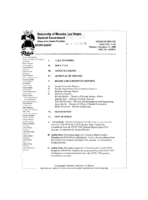
Meeting minutes for Consolidated Student Senate, University of Nevada, Las Vegas, December 11, 2000
Date
Archival Collection
Description
Text
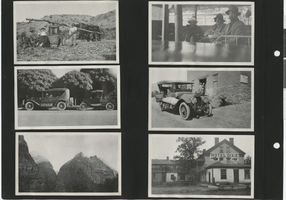
Photograph album 4, Ferron-Bracken Collection, circa 1905-1935, page 66
Date
Description
Image


